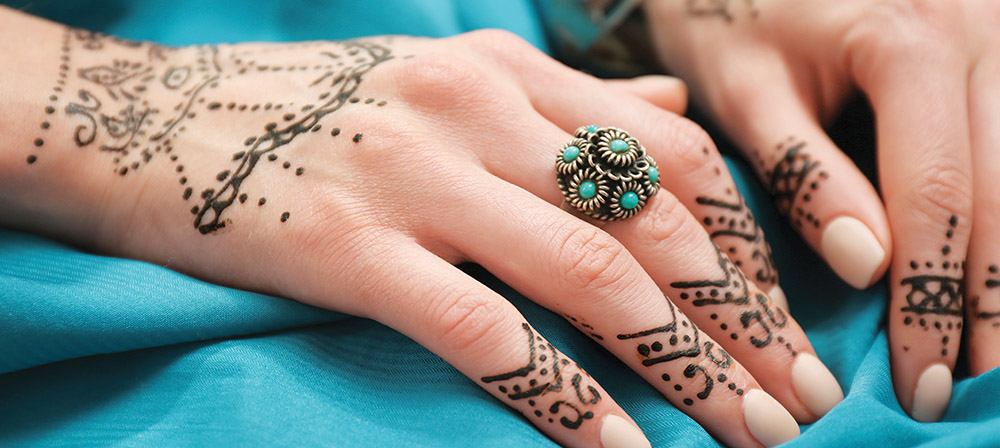Henna tattoos are all the rage these days, but many people do not realize that Indian Henna has a long and storied history – tracing back many centuries. The Henna plant itself dates all the way back to ancient Egypt, when it was presented as a gift to Queen Mumtaz of India.
The ruling Mughals soon became familiar with Indian Henna, noting its use as both a beauty product and a decorative product for the skin. Henna was especially prized for wedding ceremonies, where it was used to decorate the bride and make her even more beautiful for her new husband.
In fact, the use of Indian Henna for tattoos dates back at least 5,000 years, when it was used by the ancient Egyptians to decorate their hands and nails, and even their fingers and toes. The Pharaohs were said to be especially fond of Henna, even having their bodies stained with the product before they were mummified and entombed for the trip to the next world.
Henna has long been revered as a symbol of good luck, and it is often applied to the skin right before important events. Perhaps that is why Indian Henna was so popular for wedding ceremonies. The tradition of applying Henna to the skin for good luck has been documented in many parts of the world, including not only India and Egypt but Saudi Arabia, Iraq and Turkey as well.
The World of Henna Tattoos
Tattoos have played a major role in cultures around the world, from the Middle East and Africa to Asia and the Americas. For many thousands of years men and women have used tattoos not only as decoration but as an integral part of tribal rites and rituals. Tattoos were used to distinguish individuals, show rank and welcome young people into adulthood. While modern tattoo art is mostly about good looks and individual expression, ancient Indian Henna tattoo art was mainly about culture and tradition.
Indian Henna was often used along with other popular dyes like indigo to create a temporary decoration for the skin. The result was body art that was both great looking and long-lasting. Indian Henna in particular was revered for its ability to give the skin a deep and lustrous hue that was highly prized in cultures around the world.
Tattoo artists use the leaves of the Henna plant, which grows throughout India and much of South Asia, to create their masterpieces. The leaves of the plant are dried and used to create colorfast dyes in a range of shades. These dyes range in hue from the palest brown to the darkest russet reds – and everything in between. The leaves of the Indian Henna plant can be used to dye not only skin but hair and fingernails as well. Henna dye is also commonly used on clothing to create distinctive patterns and shades. In the world of traditional and alternative medicine, Indian Henna has often been used as a treatment for sunburn as well.
The art of Henna dying and Henna tattoo has been practiced for literally thousands of years, primarily in India and Egypt, but also in other parts of the world. As people traveled from India and the Middle East, the art of Henna tattooing began to spread. People from other parts of the world were immediately taken with the beautiful designs tattooed on the skin and the clothing of those travelers, and they looked for a way to recreate that look for themselves.
The interest in Indian Henna continues to this day, and there has been quite an increase in the number of Henna tattoo providers over the past couple of years. In fact, many people prefer the look of a quality Indian Henna tattoo to the traditional version. Henna tattoos have been around for at least the last 5,000 years, and chances are they will remain popular well into the future.

